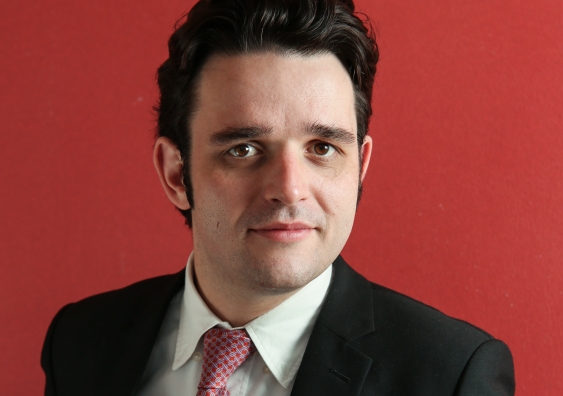Let's not isolate ourselves from the benefits of China
Recent media commentary on China-Australia relations claim that Beijing is on a mission to undermine our democratic institutions, Laurie Pearcey looks at the broader picture.
Recent media commentary on China-Australia relations claim that Beijing is on a mission to undermine our democratic institutions, Laurie Pearcey looks at the broader picture.

Yet for Australia, it was Whitlam, in 1971, who had the foresight to go to China. The opposition leader’s landmark meeting in Beijing was hailed by the then prime minister William McMahon as a “political asset” for the Coalition. The government could hardly contain its delight at being given a free kick from the Labor Party at the height of bitter Cold War polemic that plagued Australia’s polity.
What McMahon didn’t know was that just three days after Whitlam shook hands with the Communist Party elite, Henry Kissinger secretly landed in the Chinese capital laying the foundations for US president Richard Nixon’s history-defining summit with Chairman Mao.
The Coalition looked silly, Nixon met with Mao and Labor won a thumping victory at the 1972 election and established diplomatic ties with Beijing in one of its first acts of office. The rest, as they say, is history.
Now, 45 years later, China is the world’s second-largest economy, Australia’s largest trading partner, our largest source of tourists and international students, and a major contributor to the economic success of 21st century Australia.
Yet much of the recent media commentary on Sino-Australian relations posits that Beijing is on a mission to undermine our democratic institutions by buying off politicians, stealing the crown jewels of Australia’s research discoveries, and invading our university campuses with Chinese Communist Party intelligence operatives. There is no doubt China operates a political system antithetical to Australia’s proud history of parliamentary democracy, freedom of the press and rule of law. You only need look to the gathering of the Chinese Communist Party’s elite in Beijing at next week’s five-yearly Party Congress to see a system remarkably different from our own.
China has drawn significant international criticism for its human rights record and suppression of dissident voices, with Australia one of the first countries to establish a bilateral human rights dialogue with the Chinese government. But over the past 40 years of China’s economic reforms, more people have been lifted out of poverty than anywhere and at any time in the history of our planet. Perhaps this has come at the cost of Western political ideals, but it surely must stand as one of the greatest contributions to social progress and indeed global stability in human history.
China’s leadership acknowledges the diversity of global opinion generated by its rise. In his 2014 address to the Australian parliament, Chinese President Xi Jinping said “these diverse views (about China) are to be expected. After all, China is a large country of over 1.3 billion people and stands out like the big guy in the crowd”.
Department of Foreign Affairs and Trade secretary Frances Adamson was right this week when she said that “more scrutiny of China” will follow “the ways it seeks influence internationally”. As a mature democracy, we should welcome public debate and hope it is conducted in a manner that is respectful of the values and traditions we seek to uphold.
Racist smears plastered on walls at our university campuses have no place in a multicultural society that consigned the White Australia policy to the scrapheap decades ago.
The idea that highly internationally engaged universities should shy away from exchanging ideas or jointly developing technologies that will potentially yield major environmental and global health dividends for decades to come is equally fanciful. Information exchange is the foundation of the modern international research system and we are deluding ourselves if we think we can retreat to a comfortable state of isolationism.
Countless studies show that Australia continues to underperform against major comparable international economies when it comes to commercialising our research. As the world’s fastest growing investor in research and development, China represents an obvious destination for world-class research breakthroughs to have a real impact and deliver global commercialisation pathways for Australian research.
Of course, universities need to be mindful that China sits outside the ANZUS framework and respectful of the architecture that has underpinned our post-war national security. This is why universities effectively quarantine all of their sensitive research in key areas like quantum computing and fluid dynamics from Chinese collaborations, and why universities ensure strict compliance with Defence export controls.
The Chinese are sensible enough to know that Canberra and Washington are major defence and intelligence allies and recognise elements of research collaboration between China and Australia will be off limits.
That same pragmatism exists across our education relationship.
The reason Australian universities are so attractive to hundreds of thousands of international students, supported by their families and recognised by their governments, is because we are world class. The reason we are world class is because our institutions are fiercely independent and cherish their academic freedom.
This may clash with values on both sides from time to time but Beijing respects the quality and independence of our institutions, just as our government and institutions recognise and respect China’s views.
As Canberra and Beijing gear up for the 45th anniversary of diplomatic relations the challenge is to look beyond the fog of difference and towards a future where education continues to light the way.
Laurie Pearcey is pro vice-chancellor international at UNSW Sydney and former CEO of the Australia China Business Council. This article was originally published in The Australian. Read the original article.